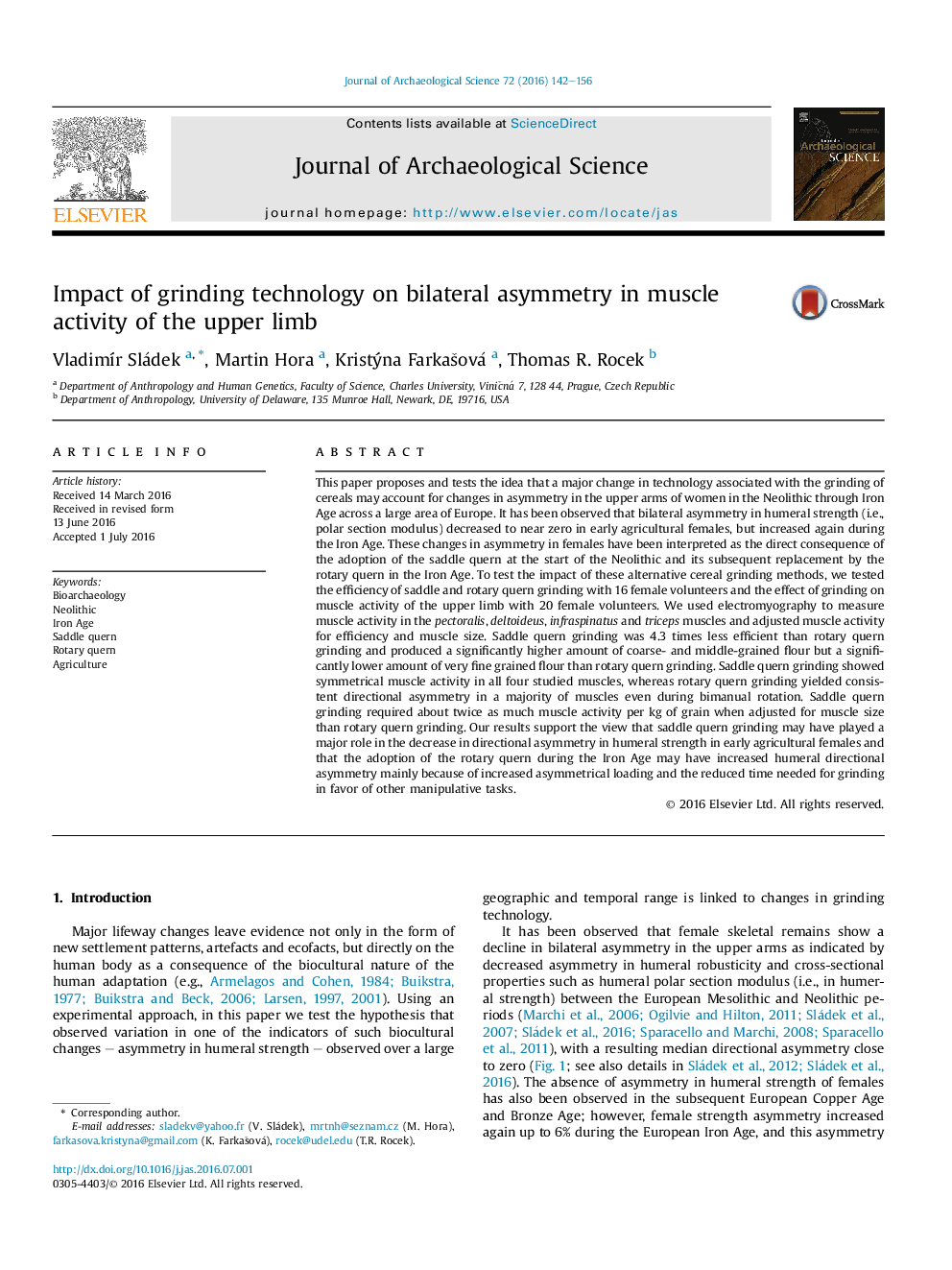| کد مقاله | کد نشریه | سال انتشار | مقاله انگلیسی | نسخه تمام متن |
|---|---|---|---|---|
| 7441290 | 1483888 | 2016 | 15 صفحه PDF | دانلود رایگان |
عنوان انگلیسی مقاله ISI
Impact of grinding technology on bilateral asymmetry in muscle activity of the upper limb
ترجمه فارسی عنوان
تاثیر تکنولوژی آسیاب بر عدم تقارن دو طرفه در فعالیت عضلانی اندام فوقانی
دانلود مقاله + سفارش ترجمه
دانلود مقاله ISI انگلیسی
رایگان برای ایرانیان
کلمات کلیدی
زیستشناسی، ارتفاعات، عصر آهن، زنجیر چرخ دنده کشاورزی،
موضوعات مرتبط
مهندسی و علوم پایه
مهندسی مواد
دانش مواد (عمومی)
چکیده انگلیسی
This paper proposes and tests the idea that a major change in technology associated with the grinding of cereals may account for changes in asymmetry in the upper arms of women in the Neolithic through Iron Age across a large area of Europe. It has been observed that bilateral asymmetry in humeral strength (i.e., polar section modulus) decreased to near zero in early agricultural females, but increased again during the Iron Age. These changes in asymmetry in females have been interpreted as the direct consequence of the adoption of the saddle quern at the start of the Neolithic and its subsequent replacement by the rotary quern in the Iron Age. To test the impact of these alternative cereal grinding methods, we tested the efficiency of saddle and rotary quern grinding with 16 female volunteers and the effect of grinding on muscle activity of the upper limb with 20 female volunteers. We used electromyography to measure muscle activity in the pectoralis, deltoideus, infraspinatus and triceps muscles and adjusted muscle activity for efficiency and muscle size. Saddle quern grinding was 4.3 times less efficient than rotary quern grinding and produced a significantly higher amount of coarse- and middle-grained flour but a significantly lower amount of very fine grained flour than rotary quern grinding. Saddle quern grinding showed symmetrical muscle activity in all four studied muscles, whereas rotary quern grinding yielded consistent directional asymmetry in a majority of muscles even during bimanual rotation. Saddle quern grinding required about twice as much muscle activity per kg of grain when adjusted for muscle size than rotary quern grinding. Our results support the view that saddle quern grinding may have played a major role in the decrease in directional asymmetry in humeral strength in early agricultural females and that the adoption of the rotary quern during the Iron Age may have increased humeral directional asymmetry mainly because of increased asymmetrical loading and the reduced time needed for grinding in favor of other manipulative tasks.
ناشر
Database: Elsevier - ScienceDirect (ساینس دایرکت)
Journal: Journal of Archaeological Science - Volume 72, August 2016, Pages 142-156
Journal: Journal of Archaeological Science - Volume 72, August 2016, Pages 142-156
نویسندگان
VladimÃr Sládek, Martin Hora, Kristýna FarkaÅ¡ová, Thomas R. Rocek,
